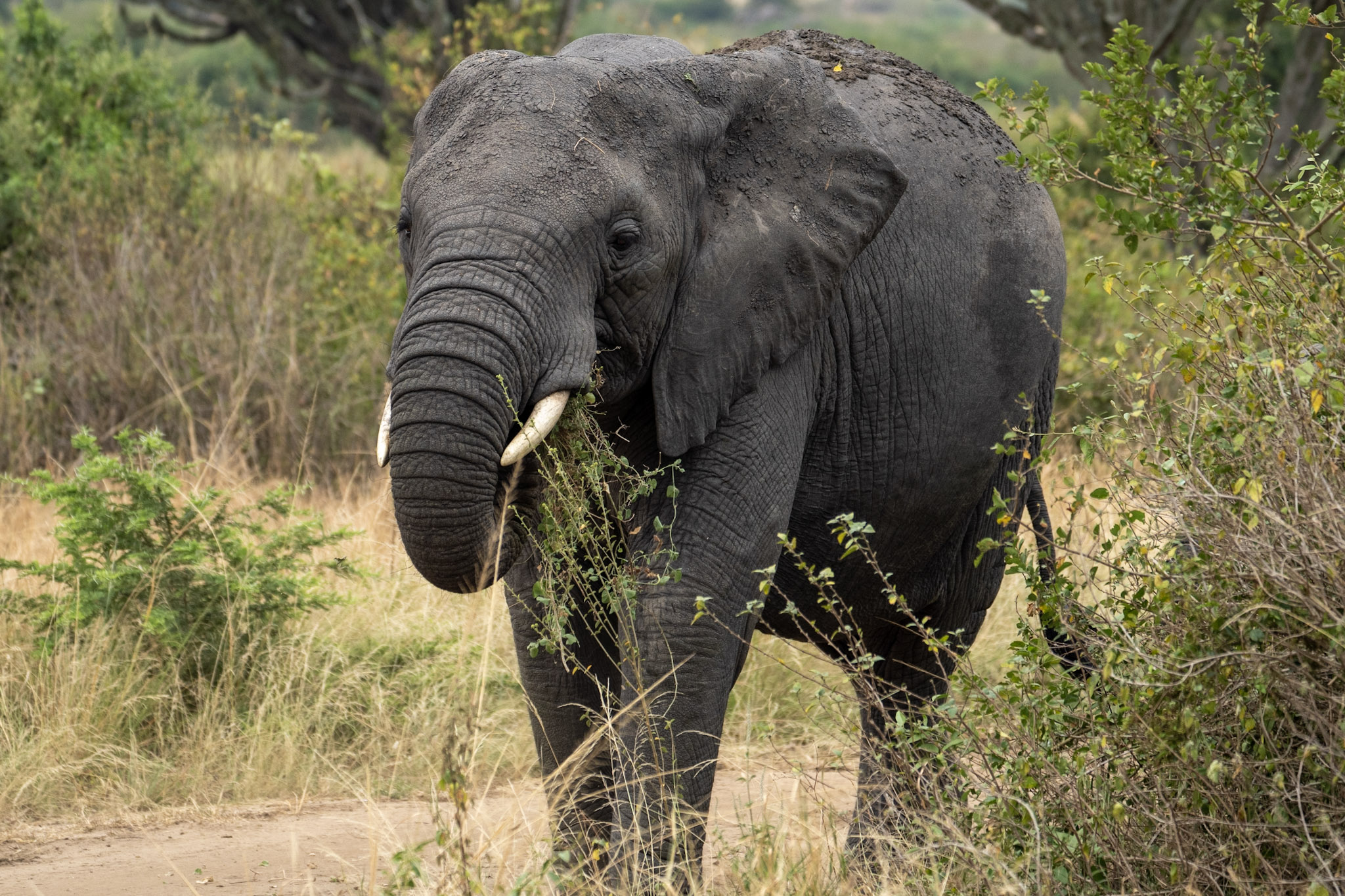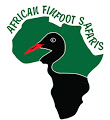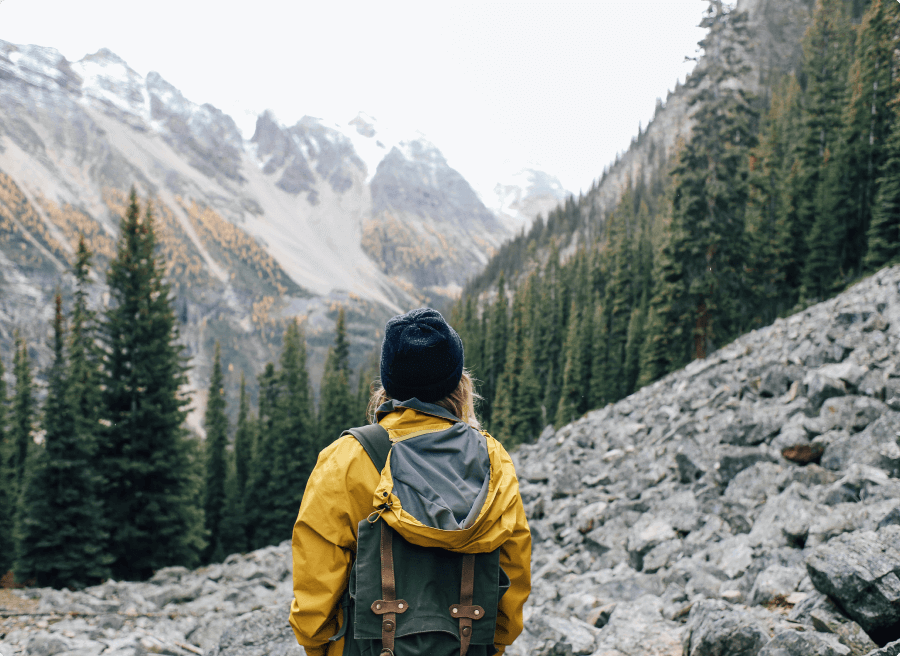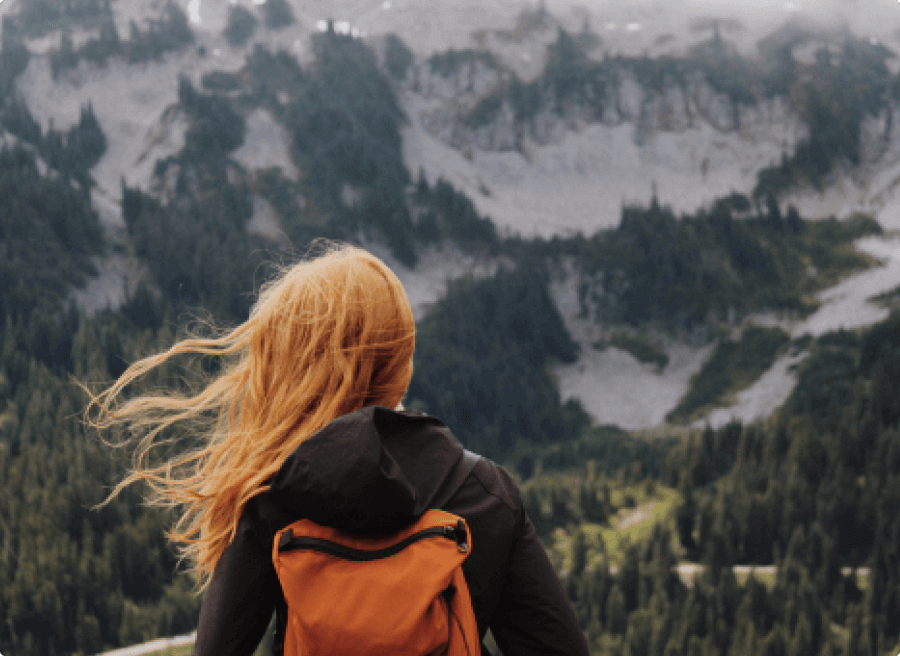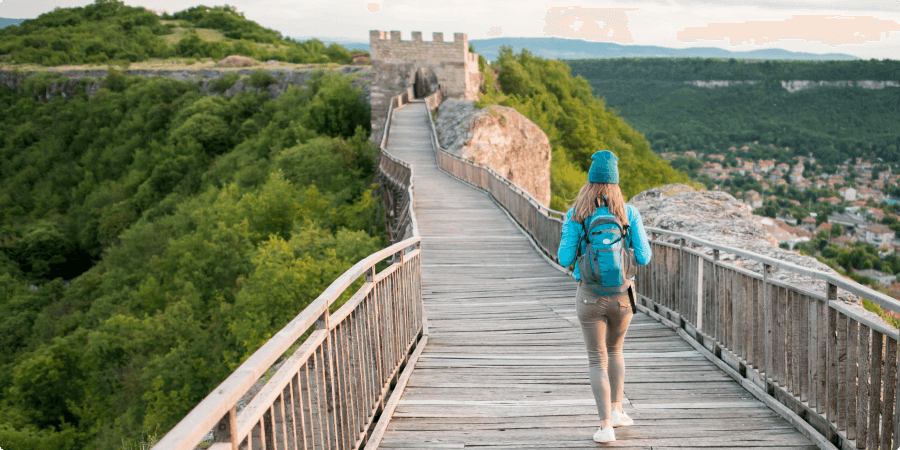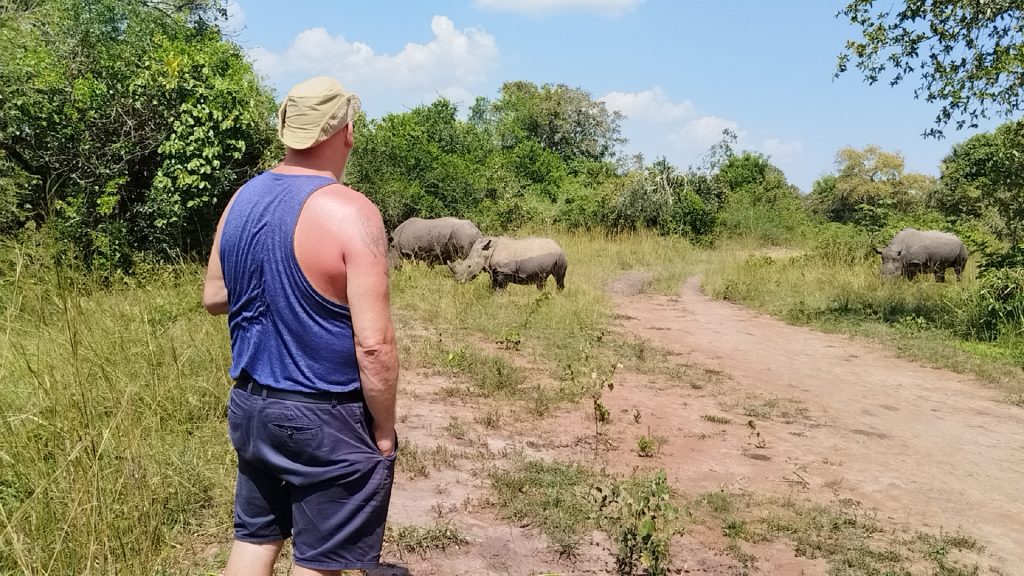
Nestled just over 160 km north of Kampala, Ziwa Rhino and wildlife ranch is Uganda’s only place to see wild rhinos. Walking safaris at Ziwa Rhino sanctuary offer a uniquely immersive wildlife experience. If you are planning a big 5 safari, a trip to Murchison falls or exploring Uganda’s wild heart, Ziwa is an absolute must-experience for the endangered rhinos, the ecosystems, and your soul.
Why Choose a Walking Safari?
While most safaris stick to vehicles, Ziwa invites you to step into the rhinos’ world on Foot. Ziwa rhino and wildlife ranch spread across 70 km² of woodlands, savannah and wetlands. Come face-to-face on foot during any of our unique walking safaris. During the walking safaris, expect the following:-
- Intimate Encounters: With experienced, armed ranger-guides leading the way, you’re allowed to get within 6–10 meters of rhinos as they graze or wallow freely in the mud
- Wildlife diversity: Beyond the rhinos, look out for antelopes such as (kobs, bushbuck, duikers), hippos, monitor lizards, monkeys and over 300 species of birds. You can as well track the illusive shoebill stork in Lugogo swamp to enhance your bird watching safari experience.
- Deep Nature Connection: Trails through acacia woodlands and seasonal swamps are more than paths. They are indeed stories, with guides pointing out different flora with local uses and refined signs of wildlife. You will indeed appreciate the magic of nature.
What to expect during the Walking Safari at Ziwa rhino and wildlife ranch
- Briefing Session. Rangers explain rules, safety protocols, and give tips on spotting and following rhino movements plus other wildlife species that you may encounter on the way.
- Tracking the Rhinos on Foot. If rhinos are not close to the briefing point, you will start with a vehicle transfer to the starting point, then proceed to where the rhinos are grazing or wallowing from. The real On Foot experience starts now.
- Observation Time. Your ranger guide will allow you to spend approximately 1 to 2 hours tracking and watching the rhinos in a respectful and non-intrusive way. Rhinos are wild so expect them to charge at you when you get closer. Abide to the guides precautions.
- Nature and Bird watching Trails. For bird enthusiasts, your ranger guides will help identify different bird species that you will encounter on the way. Such include but not limited to (shoebills, kingfishers, cranes). You will as well see the different wildlife species along woodland, savannah, or swamp trails.
- Return and debrief. Depending on where your starting point was, you will walk back as you discuss highlights and then return by vehicle. You can either proceed to you next destination or choose to spend a night at the sanctuary. Check out the different accommodation options at Ziwa rhino and wildlife ranch that may work for you.
Timing tip: Best viewing is early morning (7:30–10 AM) or late afternoon (4–6 PM), when the rhinos and other wildlife is most active. The sanctuary is however open from 0700 hours to 1700 hours daily.
Check your packing list and what to expect during this memorable adventure.
- Comfortable hiking closed shoes,
- long trousers
- Insect repellent,
- At least 1 liter of purified drinking water
- A camera or binoculars, ideally with quiet shutter to capture every moment
- Expect 1 – 2 hours on foot,
- Flat terrain
Beyond Rhinos: Check out these daily Adventures
- Shoebill Trek & Canoe Ride – Paddle through Lugogo Swamp at dawn for unforgettable swims with a living dinosaur—Africa’s iconic shoebill stork
- Bird-Watching experience – There are over 300 bird species to be spotted at Ziwa Rhino and wildlife ranch. Explore four distinct trails (woodland, swamp, savannah) to spot grey-crowned cranes, giant kingfishers, turacos, and more
Night Safaris – Guided night walks between 2000 hours – 2300 hours let you sight nocturnal wildlife like the bush babies, owls, genets and even hippos by moonlight.
Rhino Trekking Prices & other activities in USD
Foreign non – residents (Costs in USD)
| Activity | Adults | Children under 12 years |
| Park entry fees | 60 | 30 |
| Bird watching | 30 | 15 |
| Shoebill Tracking (0600 – 0900 hours) | 30 | 15 |
Foreigners residing in East Africa (Costs in USD)
| Activity | Adults | Children under 12 years |
| Park entry fees | 50 | 25 |
| Bird watching | 25 | 10 |
| Shoebill Tracking (0600 – 0900 hours) | 25 | 10 |
East African Residents (Costs in Ugandan Shillings)
| Activity | Adults | Children under 12 years |
| Park entry fees | 50, 000 | 15, 000 |
| Bird watching | 30, 000 | 10, 000 |
| Shoebill Tracking (0600 – 0900 hours) | 30, 000 | 10, 000 |
Please note:
- Park Entry cost includes Rhino Trekking, whether on foot from the ranch or driving out to see them in the bush.
- When driving to track rhinos, your own vehicle is required, unless prior arrangements have been made with Ziwa.
- Please also note that pets are not allowed at Ziwa.
Best Time to Visit
- Dry seasons (Dec–Feb & Jun–Sep): Clear trails, excellent tracking conditions. Those are also Uganda’s high season time.
- Wet seasons: Expect lush greenery, abundant birdlife—but trails can be muddy, and access is trickier.
Final Thoughts
Walking safaris at Ziwa offer more than wildlife viewing. Get ready for an intimate connection to the landscape, the animals, and the efforts being made to restore rhinos to Uganda’s wild heritage. With skilled guides, diverse ecosystems, and abundant wildlife, these walking safaris are both an adventure and a meaningful contribution to conservation.
If you’re planning a trip to Uganda, particularly en-route to Murchison Falls, make Ziwa Rhino Sanctuary and its walking safaris a top priority. You won’t just take pictures – you will take steps through a conservation success story, up close with rhinos and much more.
Let life’s big footsteps align with yours.
Book a walking safari at Ziwa—I promise, you’ll return grounded in awe.
Discover your travel Dreams – “In Conservation we Trust”
